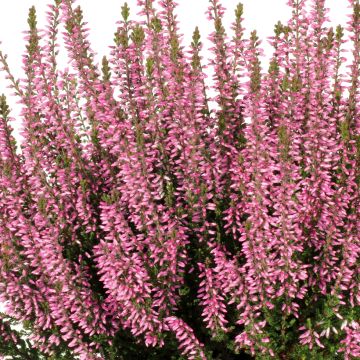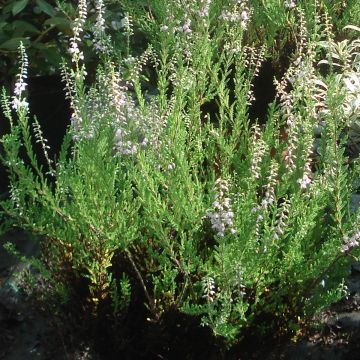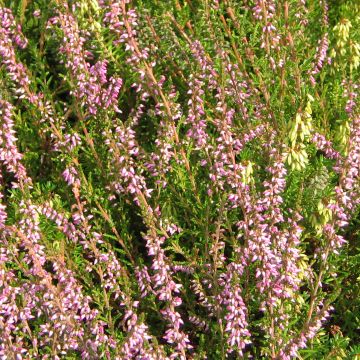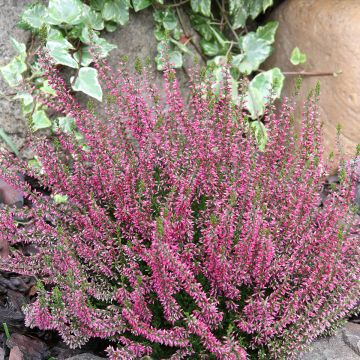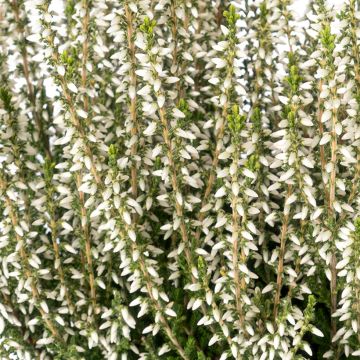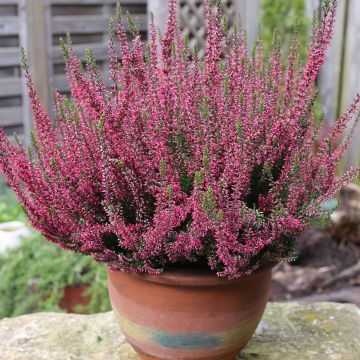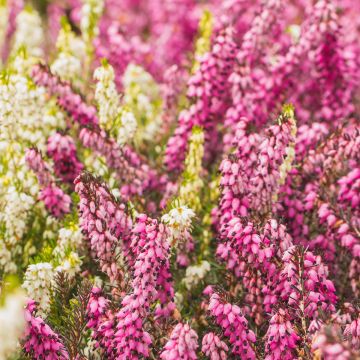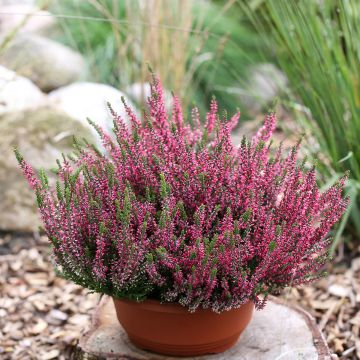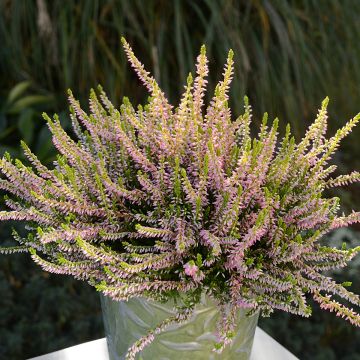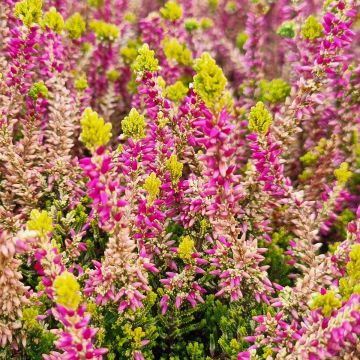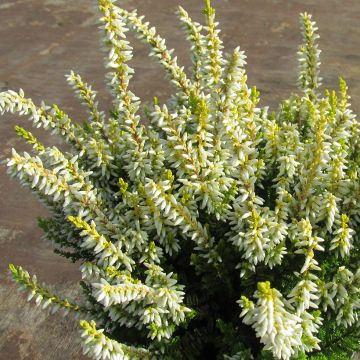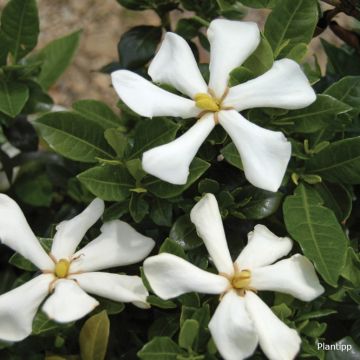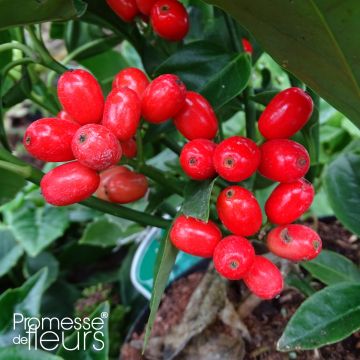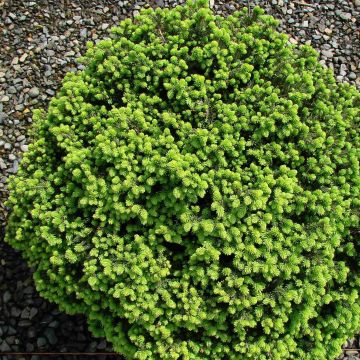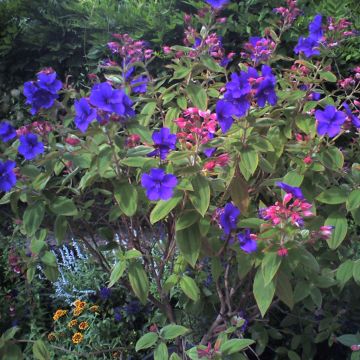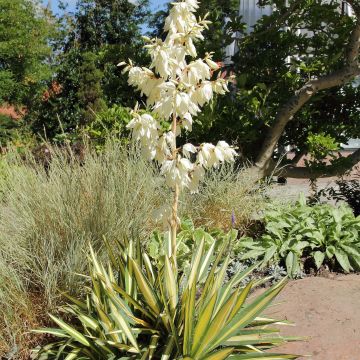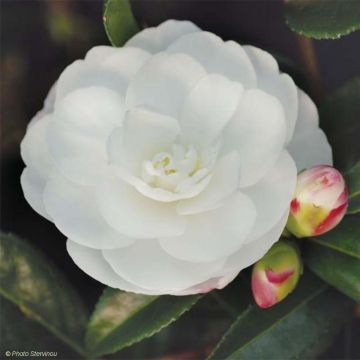

Calluna vulgaris Dark Beauty - Heather


Calluna vulgaris Dark Beauty - Heather
Calluna vulgaris Dark Beauty - Heather
Calluna vulgaris Dark Beauty
Heather, Ling, Scottish Heather
None of the 3 heathers have taken. They dried out very quickly.
Lor, 23/09/2024
Special offer!
Receive a €20 voucher for any order over €90 (excluding delivery costs, credit notes, and plastic-free options)!
1- Add your favorite plants to your cart.
2- Once you have reached €90, confirm your order (you can even choose the delivery date!).
3- As soon as your order is shipped, you will receive an email containing your voucher code, valid for 3 months (90 days).
Your voucher is unique and can only be used once, for any order with a minimum value of €20, excluding delivery costs.
Can be combined with other current offers, non-divisible and non-refundable.
Why not try an alternative variety in stock?
View all →This plant carries a 12 months recovery warranty
More information
We guarantee the quality of our plants for a full growing cycle, and will replace at our expense any plant that fails to recover under normal climatic and planting conditions.
Would this plant suit my garden?
Set up your Plantfit profile →
Description
Calluna vulgaris 'Dark Beauty' is undoubtedly one of the prettiest summer heathers currently available. This heather combines a particularly compact habit with a highly decorative, almost red flowering spike. Its flowers bloom for several weeks, from late summer to early autumn, perfectly highlighted by the bronze foliage. A beautifully coloured little ball with compact growth, it complements all the colours of autumn. Plant in rockeries, at the edge of flower beds or in a nice pot on a patio.
Calluna vulgaris is the only species in the genus Calluna belonging to the Ericaceae family. In its natural habitat, it is the dominant vegetation of acidic heathlands in the cold regions of the United Kingdom and Northern Europe. 'Dark Beauty' is an evergreen shrub that forms small, bushy, slightly tousled plants, with a height of about 20 cm (7.9 in) and a width of 35 cm (13.8 in). It has a slow growth rate. Ornamental all year round, this cultivar blooms from mid-August, with flowering continuing until mid-October. Its small, semi-double, urn-shaped flowers, which are intermediate in colour between dark pink and red, are densely clustered on upright and flexible spikes. The light green colour of its scaly foliage forms a beautiful contrast with the flowers. With the onset of cold weather, the small leaves turn bronze. It is a honey plant, used in beekeeping due to the high sugar content of its nectar. Heather honey is characterised by its gelatinous texture and dark colour.
'Dark Beauty' thrives in acidic, moist to dry soils, in low-maintenance gardens and wild areas, adding a touch of refinement. Plant it in groups with other varieties and cultivars (which are countless), small grasses or even dwarf asters. For a long winter flowering, one can imitate nature by mixing common heather and ling heather, changing the colour of the landscapes they form when they bloom. This small plant brightens up rockeries and borders along pathways. It adapts very well to container gardening and will create beautiful seasonal compositions. Planted in ericaceous beds, it will cover the base of rhododendrons or witch hazels.
Calluna vulgaris tolerates moderate grazing. It represents an important source of food for sheep and deer when vegetation is covered by snow. It is capable of regenerating after fire. In the past, this plant was considered magical and used in white magic rituals; it was believed to have protective powers in the heathlands of Brittany, where it is said to repel ghostly spirits. Calluna is also an ingredient in gruit, an aromatic composition used in brewing beer before the use of hops in the Middle Ages. Its flowering tops have long been used in herbal medicine, as they are reputed to "dissolve bladder stones".
Report an error about the product description
Calluna vulgaris Dark Beauty - Heather in pictures


Flowering
Foliage
Plant habit
Botanical data
Calluna
vulgaris
Dark Beauty
Ericaceae
Heather, Ling, Scottish Heather
Cultivar or hybrid
Other Calluna - Common Heather
View all →Planting and care
Heather is a characteristic plant of heathlands, blanket bogs, and pine forests. A covering of shredded bark or turf is useful in the coldest regions. It requires light, sandy, well-drained soil, that is truly acidic (for example composed of 1/3 ericaceous soil, 1/3 non-limestone vegetable soil, and 1/3 sand). It cannot tolerate limestone. It thrives in sunny or semi-shaded exposure. In colder regions, it is possible to plant it in full sun, while in a hot climate, a semi-shaded exposure is preferable.
In order to maintain a dense and compact habit, prune lightly in late winter or just after flowering.
Planting period
Intended location
Care
-
, onOrder confirmed
Reply from on Promesse de fleurs
Similar products
Haven't found what you were looking for?
Hardiness is the lowest winter temperature a plant can endure without suffering serious damage or even dying. However, hardiness is affected by location (a sheltered area, such as a patio), protection (winter cover) and soil type (hardiness is improved by well-drained soil).

Photo Sharing Terms & Conditions
In order to encourage gardeners to interact and share their experiences, Promesse de fleurs offers various media enabling content to be uploaded onto its Site - in particular via the ‘Photo sharing’ module.
The User agrees to refrain from:
- Posting any content that is illegal, prejudicial, insulting, racist, inciteful to hatred, revisionist, contrary to public decency, that infringes on privacy or on the privacy rights of third parties, in particular the publicity rights of persons and goods, intellectual property rights, or the right to privacy.
- Submitting content on behalf of a third party;
- Impersonate the identity of a third party and/or publish any personal information about a third party;
In general, the User undertakes to refrain from any unethical behaviour.
All Content (in particular text, comments, files, images, photos, videos, creative works, etc.), which may be subject to property or intellectual property rights, image or other private rights, shall remain the property of the User, subject to the limited rights granted by the terms of the licence granted by Promesse de fleurs as stated below. Users are at liberty to publish or not to publish such Content on the Site, notably via the ‘Photo Sharing’ facility, and accept that this Content shall be made public and freely accessible, notably on the Internet.
Users further acknowledge, undertake to have ,and guarantee that they hold all necessary rights and permissions to publish such material on the Site, in particular with regard to the legislation in force pertaining to any privacy, property, intellectual property, image, or contractual rights, or rights of any other nature. By publishing such Content on the Site, Users acknowledge accepting full liability as publishers of the Content within the meaning of the law, and grant Promesse de fleurs, free of charge, an inclusive, worldwide licence for the said Content for the entire duration of its publication, including all reproduction, representation, up/downloading, displaying, performing, transmission, and storage rights.
Users also grant permission for their name to be linked to the Content and accept that this link may not always be made available.
By engaging in posting material, Users consent to their Content becoming automatically accessible on the Internet, in particular on other sites and/or blogs and/or web pages of the Promesse de fleurs site, including in particular social pages and the Promesse de fleurs catalogue.
Users may secure the removal of entrusted content free of charge by issuing a simple request via our contact form.
The flowering period indicated on our website applies to countries and regions located in USDA zone 8 (France, the United Kingdom, Ireland, the Netherlands, etc.)
It will vary according to where you live:
- In zones 9 to 10 (Italy, Spain, Greece, etc.), flowering will occur about 2 to 4 weeks earlier.
- In zones 6 to 7 (Germany, Poland, Slovenia, and lower mountainous regions), flowering will be delayed by 2 to 3 weeks.
- In zone 5 (Central Europe, Scandinavia), blooming will be delayed by 3 to 5 weeks.
In temperate climates, pruning of spring-flowering shrubs (forsythia, spireas, etc.) should be done just after flowering.
Pruning of summer-flowering shrubs (Indian Lilac, Perovskia, etc.) can be done in winter or spring.
In cold regions as well as with frost-sensitive plants, avoid pruning too early when severe frosts may still occur.
The planting period indicated on our website applies to countries and regions located in USDA zone 8 (France, United Kingdom, Ireland, Netherlands).
It will vary according to where you live:
- In Mediterranean zones (Marseille, Madrid, Milan, etc.), autumn and winter are the best planting periods.
- In continental zones (Strasbourg, Munich, Vienna, etc.), delay planting by 2 to 3 weeks in spring and bring it forward by 2 to 4 weeks in autumn.
- In mountainous regions (the Alps, Pyrenees, Carpathians, etc.), it is best to plant in late spring (May-June) or late summer (August-September).
The harvesting period indicated on our website applies to countries and regions in USDA zone 8 (France, England, Ireland, the Netherlands).
In colder areas (Scandinavia, Poland, Austria...) fruit and vegetable harvests are likely to be delayed by 3-4 weeks.
In warmer areas (Italy, Spain, Greece, etc.), harvesting will probably take place earlier, depending on weather conditions.
The sowing periods indicated on our website apply to countries and regions within USDA Zone 8 (France, UK, Ireland, Netherlands).
In colder areas (Scandinavia, Poland, Austria...), delay any outdoor sowing by 3-4 weeks, or sow under glass.
In warmer climes (Italy, Spain, Greece, etc.), bring outdoor sowing forward by a few weeks.































